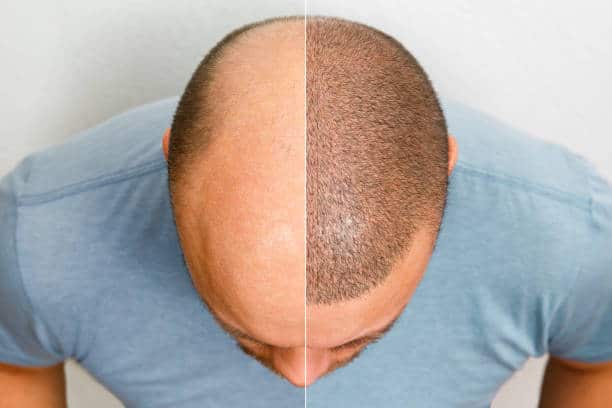The question of whether insurance covers hair restoration treatments is one that many individuals grappling with hair loss often ask. Hair restoration, encompassing a range of treatments from medication to surgical procedures like hair transplants, can be a significant step towards boosting self-confidence and improving one’s quality of life. However, the financial aspect of these treatments, particularly whether they are covered by insurance, plays a crucial role in the decision-making process.
In this article, we will explore the intricacies of “Does Insurance Cover Hair Restoration,” delving into the types of treatments available, the criteria insurance companies use to determine coverage, and the various factors that influence this decision.
Does Insurance Cover Hair Restoration?
Understanding the landscape of insurance coverage for hair restoration is not straightforward. Generally, most insurance policies categorize hair restoration procedures as cosmetic, and therefore, they are not typically covered. However, there are exceptions and specific circumstances where coverage might be possible. For instance, hair loss due to certain medical conditions or treatments may fall under the umbrella of necessary medical procedures. This article aims to clarify these nuances, providing insights into the insurance industry’s perspective on hair restoration and offering guidance for individuals considering these treatments.
Understanding the Scope of Insurance Coverage for Hair Restoration
Types of Hair Restoration Treatments
Hair restoration treatments vary widely, ranging from non-surgical options like prescription medications and topical treatments to surgical procedures such as hair transplant surgery. Each method addresses hair loss differently, and the choice of treatment depends on the individual’s condition, preferences, and medical advice.
- Non-Surgical Treatments: These include medications like minoxidil (Rogaine) and finasteride (Propecia), which are often used to treat pattern baldness. While these are more affordable, their costs can accumulate over time.
- Surgical Treatments: Hair transplant surgeries, like Follicular Unit Transplantation (FUT) and Follicular Unit Extraction (FUE), are more invasive and significantly more expensive. These procedures involve transplanting hair follicles from one part of the scalp to another.
Criteria for Insurance Coverage
The main determinant for insurance coverage of hair restoration treatments lies in the classification of the procedure:
- Cosmetic vs. Medical Necessity: Most insurance companies classify hair restoration as a cosmetic procedure, which is typically not covered. However, if hair loss is due to a medical condition or as a side effect of medical treatment (like chemotherapy), some policies might offer partial coverage.
- Documentation of Medical Necessity: To qualify for coverage, there often needs to be documented evidence from a medical professional that the hair loss is due to a medical condition and that the restoration treatment is necessary for the patient’s health or well-being.
Factors Influencing Coverage Decision
- Type of Insurance Plan: The extent of coverage largely depends on the specific health insurance plan. Some plans may offer more comprehensive coverage, including treatments for conditions that cause hair loss.
- Individual Policy Terms: It’s important to review the terms of your insurance policy. Some policies may have specific clauses regarding hair restoration, while others might offer coverage under a broader medical treatment category.
- Consultation with Insurance Providers: Before proceeding with treatment, it’s advisable to consult directly with your insurance provider to understand the specifics of what is and isn’t covered under your policy.
Conclusion: Navigating Insurance Coverage for Hair Restoration
In summarizing our exploration of “Does Insurance Cover Hair Restoration,” it’s clear that the intersection between hair restoration treatments and insurance coverage is complex and varies significantly based on individual policies and circumstances. Generally, insurance companies view most hair restoration procedures as cosmetic, thus not covering them under standard health insurance plans. However, exceptions exist, particularly when hair loss is linked to medical conditions or treatments, making a thorough understanding of your insurance policy and the nature of your hair loss crucial.
For individuals considering hair restoration, the first step should be a detailed consultation with a healthcare provider. This professional assessment can determine the underlying cause of hair loss and recommend appropriate treatment options. If the hair loss is due to medical reasons, obtaining documentation from your healthcare provider is essential. This documentation can be critical in making a case for insurance coverage, as it proves the medical necessity of the treatment.
Understanding the specifics of your health insurance policy is equally important. Review your policy’s terms and conditions, and directly engage with your insurance provider to clarify coverage details. Ask specific questions about what types of treatments are covered, under what conditions, and to what extent. For treatments not covered by insurance, consider discussing alternative financing options with your healthcare provider or exploring other avenues that might offer financial assistance.
In conclusion, while navigating insurance coverage for hair restoration can be challenging, being well-informed about your policy, understanding the medical basis of your hair loss, and maintaining open communication with both your healthcare provider and insurance company are key to making informed decisions. By carefully evaluating your options and seeking the necessary medical and financial advice, you can choose a hair restoration path that not only meets your health and aesthetic needs but also aligns with your financial situation.



